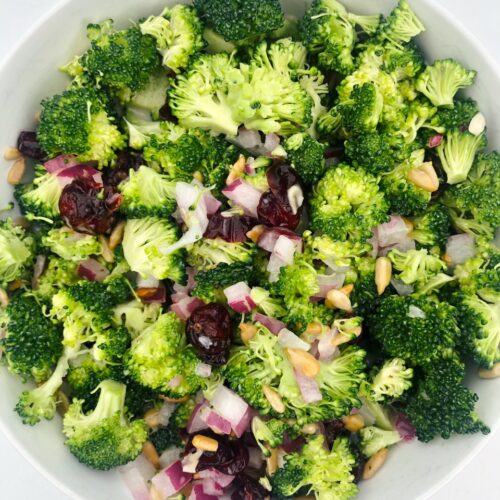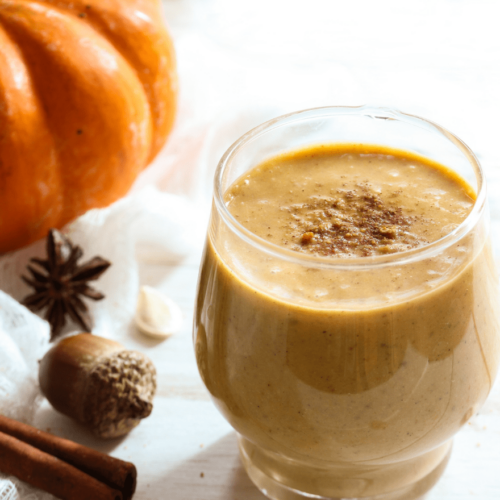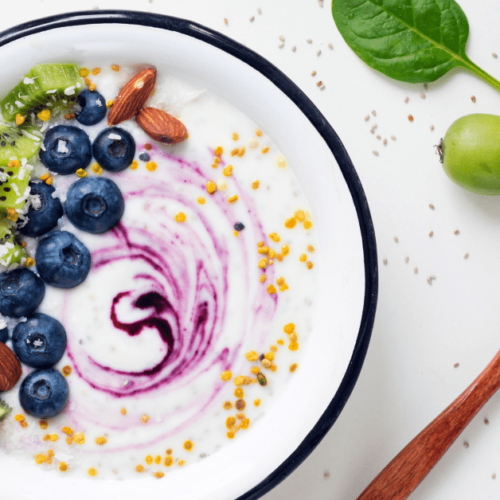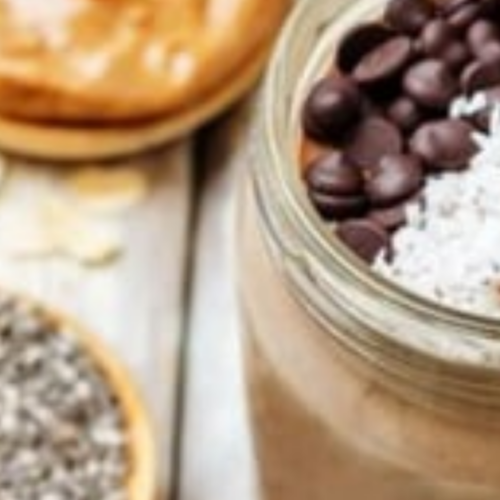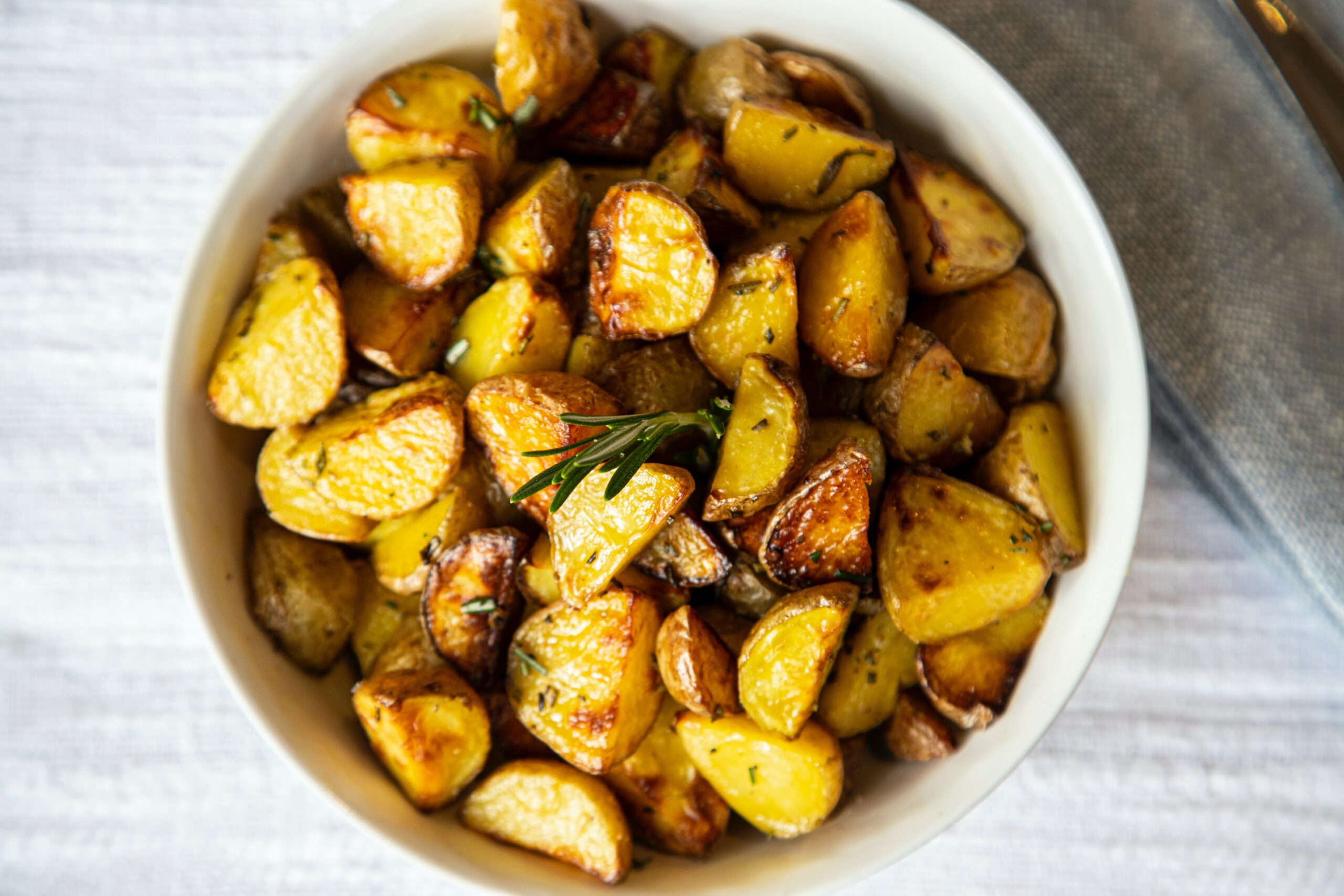
by Julie Pace, RDN | Dec 8, 2021
Rosemary Roasted Potatoes
This recipe makes a delicious and nutritious side dish for breakfast, lunch or dinner. These potatoes are super easy to make and only requires a few ingredients. The aroma of the rosemary and garlic will have your kitchen smelling delicious while they're cooking. This is a go-to classic side dish for Christmas or Thanksgiving dinner.
Prep Time 10 minutes mins
Cook Time 25 minutes mins
Total Time 35 minutes mins
Course Breakfast, Dinner, Lunch, Side Dish
Cuisine American
- 1 pound red potatoes rinsed, dried, diced
- 1/8 cup extra virgin olive oil
- 2 Tbsp fresh rosemary leaves minced, (can use dried leaves)
- 2 Tbsp fresh garlic minced
- 3/4 tsp salt optional
- 1/2 tsp pepper
Preheat oven to 450 degrees.
Cut the potatoes into bite sized, diced pieces and place in medium bowl. Drizzle with olive oil, salt, pepper, rosemary leaves, minced garlic and toss until potatoes are well coated. Spread potatoes on baking sheet and roast for 30 minutes or so, making sure to flip a few times while roasting to ensure even browning.
Remove from oven and enjoy!
Keyword potatoes, rosemary, side dish
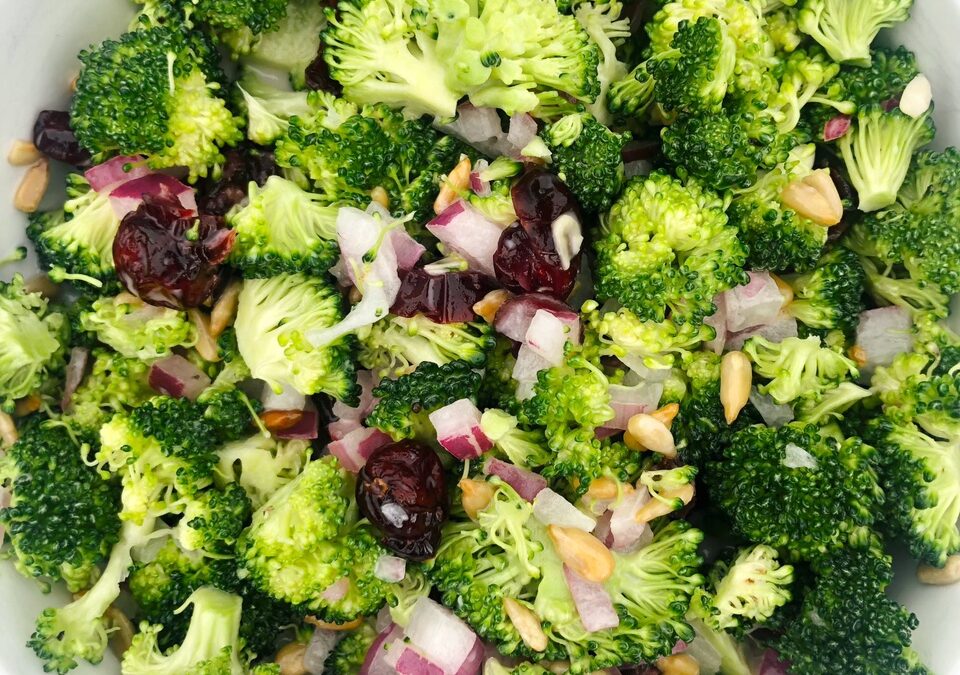
by Julie Pace, RDN | Oct 9, 2021
Broccoli Salad
A simple, classic broccoli salad recipe that makes a healthy side dish for any meal. It's a delicious combination of cranberries, sunflower seeds, red onions and a homemade sweet and savory dressing. Not only is this salad delicious, but it's also a super nutritious dish that's full of fiber, antioxidants, and bioactive compounds that can provide you with many health benefits.
Prep Time 10 minutes mins
30 minutes mins
Total Time 40 minutes mins
Course Salad, Side Dish
Cuisine American, dairy free
- 6 cups broccoli florets
- 1/4 cup dried cranberries
- 1/3 cup red onions finely chopped
- 1/4 cup sunflower seeds
Sweet and Savory Dressing
- 1/2 cup mayonnaise for dairy free I used Follow your Heart Brand
- 3 Tbsp cider vinegar
- 3 Tbsp sugar, granulated
Sweet and Savory Dressing
Broccoli Salad
In a large bowl, combine broccoli, onions, sunflower seeds. Pour the dressing over salad and toss well. Cover and refrigerate for 30 minutes before serving.
Pour dressing over salad and toss well. Cover and refrigerate for 30 minutes.
The 30 minute sit time in refrigerator is optional. However, the flavor is better if it marinates for at least 30 minutes. Will last in fridge for 5 days.
Keyword broccoli salad, Quick and Easy

by Julie Pace, RDN | Oct 9, 2021
Pumpkin Spice Smoothie
This protein packed pumpkin spice smoothie made with banana, dairy-free yogurt, pumpkin puree and autumn spices makes a healthy and delicious breakfast or snack.
Course Breakfast, Dessert, Drinks
Cuisine dairy free, vegan
- 8 ounces plant-based milk I used Silk Ultra, vanilla, unsweetened
- 3/4 cup pumpkin, canned
- 1/2 cup yogurt, dairy-free vanilla
- 3 apricots, fresh pitted and chopped
- 1 medium banana frozen
- 1/2 tsp cinnamon
- 1/4 cup maple syrup
- 1/2 tsp pumpkin pie spice
- 1-1/2 cup ice
Keyword Holiday, plant-based smoothie, vegan
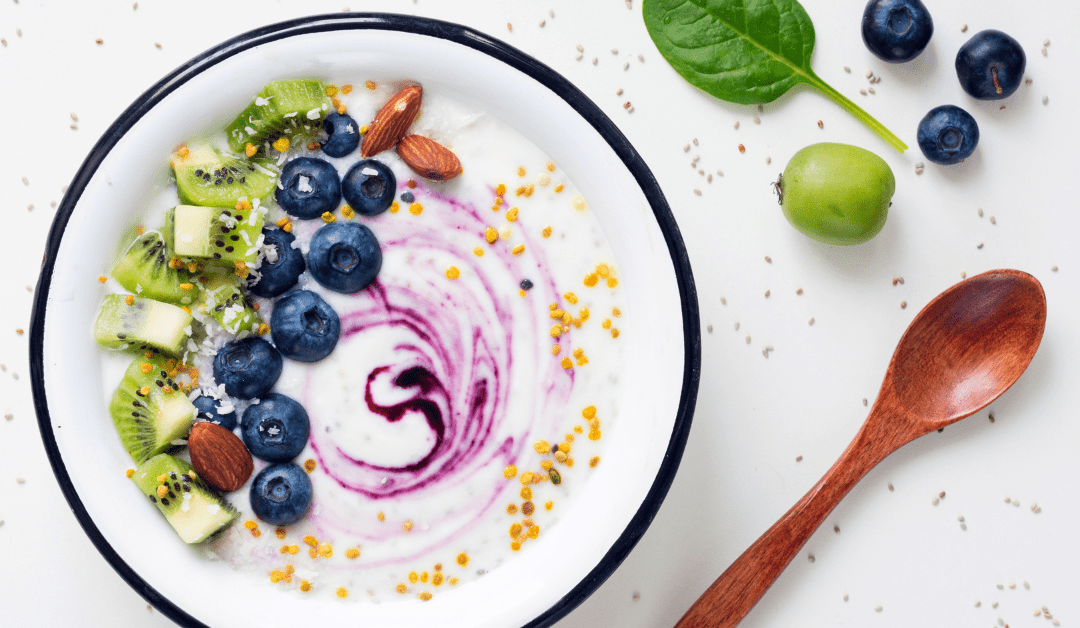
by Julie Pace, RDN | Oct 7, 2021
Immune Supporting Smoothie Bowl
Blend up a nutritious and delicious bowl of goodness packed with immune supporting nutrients from ingredients like kiwi and blueberries. Kiwi and blueberries are loaded with vitamin C and powerful antioxidants to support immune health.
Prep Time 5 minutes mins
Total Time 5 minutes mins
Course Breakfast, Dessert
Cuisine vegan
- 1 cup plant-based milk I used Silk Ultra Vanilla, unsweetened
- 1 tsp vanilla extract
- 2 medium banans peeled, frozen, slced
Toppings
- 1 kiwi peeled, sliced
- 2 tbsp hemp hearts
- 1/2 cup blueberries organic
- 1 Tbsp almonds
Add plant-based milk, frozen banana, vanilla into high powered blender. Blend until smooth.
Pour into bowl. Add toppings and enjoy!
Keyword Smoothie Bowl, Superfood
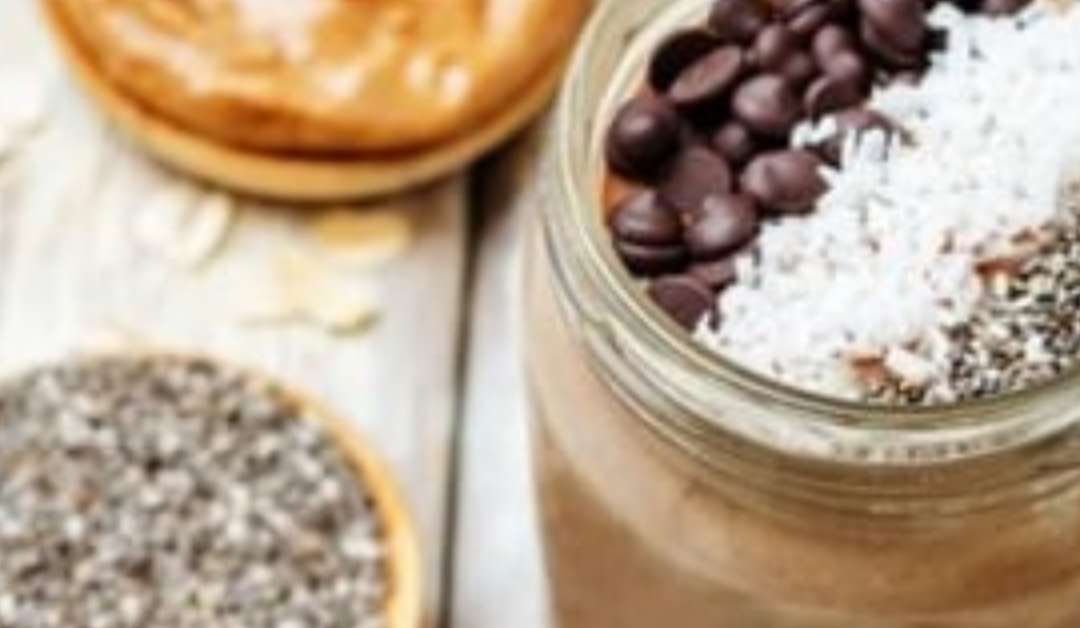
by Julie Pace, RDN | Oct 7, 2021
Chocolate Peanut Butter Chia Parfait
Wake up to this peanut butter cup inspired chia seed parfait. It's nutritious and super easy to make.
Prep Time 5 minutes mins
Chill in refrigeragtor 4 hours hrs
Course Breakfast, Dessert
- 1/4 cup chia seeds
- 2-1/2 tbsp unsweetened cocoa powder
- 1-1/4 cup unsweetened almond milk vanilla
- 2 Tbsp maple syrup
- 1 medium banana mashed plus optional additional slices to top the parfait.
- 2-1/2 Tbsp peanut butter creamy
- unsweetened shredded coconut (optional) to taste
- dark chocolate (optional) to taste
Add chia seeds, cacao powder, 1 cup of milk, and maple syrup to a mason jar. Shake vigorously or whisk to combine. Let sit for 10 minutes, then shake/whisk again.
Place in refrigerator overnight or for at least 4 hours.
Mash banana and peanut butter together and whisk in 1/4 cup of milk, adding more if needed to make a sauce.
Either stir sauce into chia pudding before serving or layer to make a parfait.
Taste chia pudding for sweetness and adjust accordingly.
Optional: top with some seeds, shredded coconut, dark chocolate chips, additional sliced banana
Keyword chia pudding, vegan




